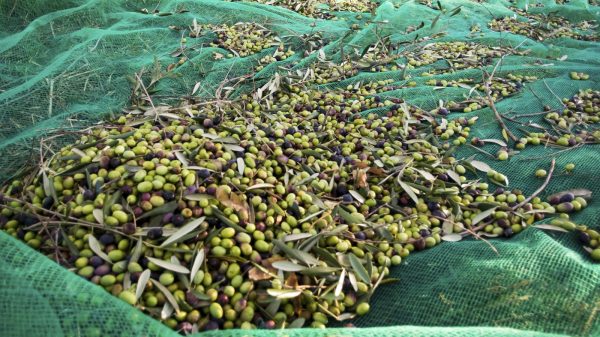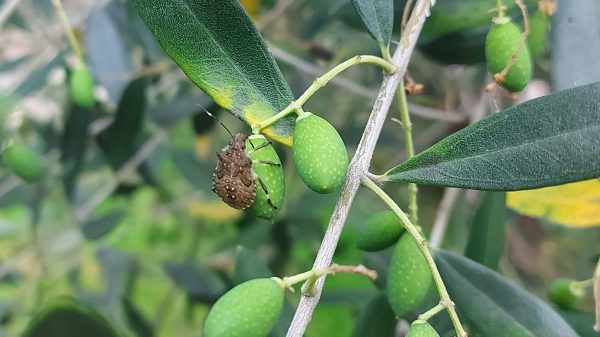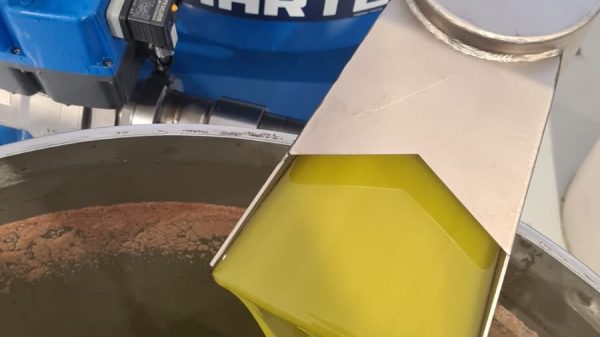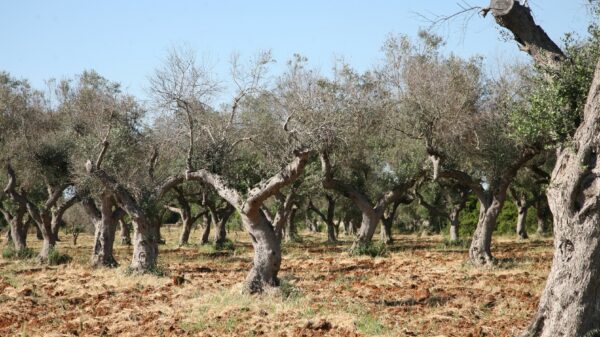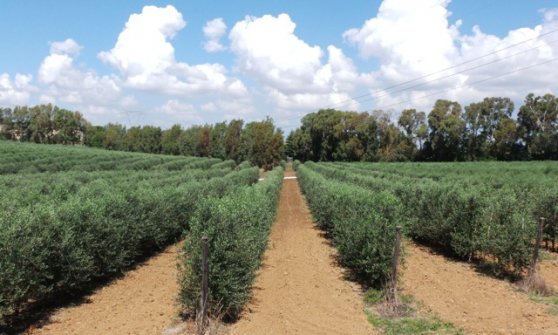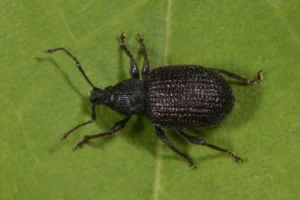 Plants synthesize and emit large amounts of “volatile” organic compounds, which are released from many tissues such as leaves, fruits, flowers and roots.
Plants synthesize and emit large amounts of “volatile” organic compounds, which are released from many tissues such as leaves, fruits, flowers and roots.
These molecules are synthesized from primary metabolites such as carbohydrates, amino acids and, in particular, unsaturated fatty acidsFurthermore, they are characterized, at room temperature, by low boiling points and high vapor pressures (therefore very volatile).
Among these substances, some are derived from fatty acids, in particular, fromlinoleic acid e linolenic; those coming from green leaves (acronym GLV, green leaf volatiles), are formed by compounds, in a linear chain, with six carbon atoms (C6) and with aldehyde, alcohol and ester functional groups.
Plants, when not stressed, release only infinitesimal quantities of GLV, while they synthesize them rapidly, indeed, within a few seconds, following stress mechanical damage, from bacterial infection o fungal or from abiotic stresses such as heat, intense light, drought or contact with heavy metals [1].
These volatile molecules are produced by the oxidation of fatty acids, through the enzymatic pathway lipoxygenase (acronym Lox, the acronym for the enzymatic cascade: Lox Pathway) and the branch of the enzyme 13-hydroperoxide-lyase (13-HPL), which with subsequent interventions by other enzymes, lead to the formation of aldehydes (saturated and unsaturated), of alcohols and finally of esteri.
This mechanism of aroma formation is common to what happens, in a few moments, during the phase olive pressing, aromas which then determine the fragrance of the oil [2].
La volatile fraction of extra virgin olive oil (EVOO) is made up of a complex mixture of over 200 compounds, which together contribute to defining their olfactory profile [3, 4], among these the GLVs are the most important from both a quantitative and qualitative point of view. Particularly important is the content of aldehyde (E)-2-hexenal (bitter almond, green apple, cut grass), which represents over 50% of the volatile fraction of EVOO.
The LOX enzyme is released from the fruit pulp cells in order to produce, from linolenic acid, thetraumatic acid, as a plant hormone that induces the healing of tissue damage [4]. Therefore the aroma of the oil is a consequence of the response to the cellular damage produced by crushing.
The enzyme lipoxygenase catalyzes theoxidation of fatty acids in a precise position of the carbon chain (the so-called regiospecificity), that is, both on carbon C9 (9-LOX) or on carbon C13 (13-LOX) of the carbon skeleton of the polyunsaturated fatty acid.
This oxidative action leads to the formation of 13-hydroperoxides, subsequently heterolytically cleaved by 13-HPL in C6 aldehydes (fruity, herbaceous, green, cut grass, almond, green apple, tomato, leaf...).
Afterwards the C6 aldehydes are reduced by enzymes alcohol dehydrogenase (ADH) to form the C6 alcohols (herbaceous-fruity, ripe apple, aromatic, leaf...), which can, finally, be esterased with acyl-CoA derivatives in a reaction catalyzed by enzymes alcohol acyltransferase (AAT) in esteri (fruity, floral, strawberry, apple, banana, green leaf…) [2].
The olive tree has four LOX genes: two genes encoding isoforms that strictly display 13-LOX activity (Oe1LOX2 and Oe2LOX2), with localization in chloroplasts, and two LOX genes encoding isoforms cytosolic which mainly exhibit 9-LOX activity (Oe1LOX1 and Oe2LOX1).
All four LOX genes are present in the drupe mesocarp and leaf tissues, with greater involvement of the Oe2LOX2 gene (13-LOX activity) in the synthesis of EVOO volatile compounds [5].
So far it has been characterized, in the olive tree, a single HPL gene (OeHPL) which codes for a protein with enzymatic activity (whose activity optimum is at 15°C) with a supposed localization in the chloroplasts and a specificity for 13-hydroperoxides (13-HPL), this explains the absence of volatile C9 compounds in the aroma of olive oil [6].
Il HPL gene it is expressed in the leaves and mesocarp of the olive drupe, showing a slight, significant peak at the beginning of fruit ripening. Furthermore, this olive gene appears to be involved in the response to several abiotic stresses and infestations from Bactrocera oleae.
Spanish researchers [7] have demonstrated that the activity of the gene, and the 13-HPL enzyme, is essential for normal growth and development of the olive tree. The reason could be the role played by the enzyme in the elimination of hydroperoxides of fatty acids polyunsaturated that they are toxic to the plant. In fact an excess of hydroperoxide derivatives in the plant tissues affects its growth.
Cerezoi S. and collaborators have demonstrated that, if the HPL gene is “silenced”, the 'green note' or 'fruity' or 'green attribute' aromas of the oil are not formed either on the leaves of the olive tree or even in the oil produced from the olives; furthermore, they have documented that without the presence of the gene, the plant is negatively affected during its growth and development.
Furthermore, when the 13-HPL gene comes silenced, there is also a drastic alteration in the composition of the volatile molecules, with a strong reduction in the content of volatile compounds with 6 carbon atoms but also with a increase in volatile compounds with 5 carbon atoms.
In the absence of HPL, penten-dimers and saturated and unsaturated molecules with 5 carbon atoms are formed by a additional branch of the LOX pathway.
LOX would also catalyze, after the formation ofhydroperoxide, its cleavage via 13-alkyl radicals and stabilized pentene radicals. These radicals would undergo subsequent β, n cleavageon enzymatic, homolytically to form penten-dimers (C10 hydrocarbons) or react with a hydroxyl radical to produce volatile molecules C5, alcohols such as 2-penten-1-ol, 1-penten-3-ol, aldehydes such as 2-pentenal and ketones such as 1-penten-3-one.
The research of Cerezo S.'s group represents a study of “functional genomics”, which confirms the physiological role of the genes linked to the quality of olive oil and had the aim of evaluating the effect of overexpression (3-fold increased activity in leaves compared to control) and del silencing of the 13-HPL gene, involved in the generation of volatile compounds, on the profile of the leaves of transgenic olive trees. Furthermore, the effect of gene manipulation on plant growth and development was also evaluated.
These genetic manipulations could generate new cultivarsr of olive trees with modified expression/activity levels with respect to specific genes/enzymes of the LOX pathway present in the fruit to improve some desired volatile compounds.
In fact, the enhancement of the 13-HPL enzyme, the reduction of the activities of alcohol dehydrogenase (ADH) and alcohol acyl transferase (AAT) could be used to increase the "green" aroma while an increase in the AAT activity for increased fruity aroma [8].
[1] Ameye M. et al., 2018. Green leaf volatile production by plants: a meta-analysis. New Phytol., 220; 666-83.
[2] Vujovic A. 2020. Olive oil between history and science. pg. 318-328; Tozzuolo Publisher, Perugia.
[3] Angerosa F. et al., 2000. Virgin olive oil odor notes: their relationships with the volatile compounds from the lipoxygenase pathway and secoiridoid compounds. Food Chem., 68; 283-87.
[4] Laudadio M., Angerosa F. 2020. Divine gift oil. Pg. 107-112; New World Editions. Pescara.
[5] MN Padilla MN et al. 2009. Functional characterization of two 13-lipoxygenase genes from olive fruit in relation to the biosynthesis of volatile compounds of virgin olive oil. J. Agric. Food Chem., 57; 9097-107.
[6] Peres F. et al. 2017. Influence of enzymes and technology on virgin olive oil composition. Critical Reviews in Food Science and Nutrition. 57,14; 3104-26.
[7] Cerezo S. et al. 2021. Modification of 13-hydroperoxide lyase expression in olive affects plant growth and results in altered volatile profile. Plant Sci. 313:111083. https://doi.org/10.1016/j.plantsci.2021.111083.
[8] JJ Salas JJ 2004. Characterization of alcohol acyltransferase from olive fruit. J. Agric. Food Chem., 52; 3155-58.
Browse for free l'Olivo News click , here
